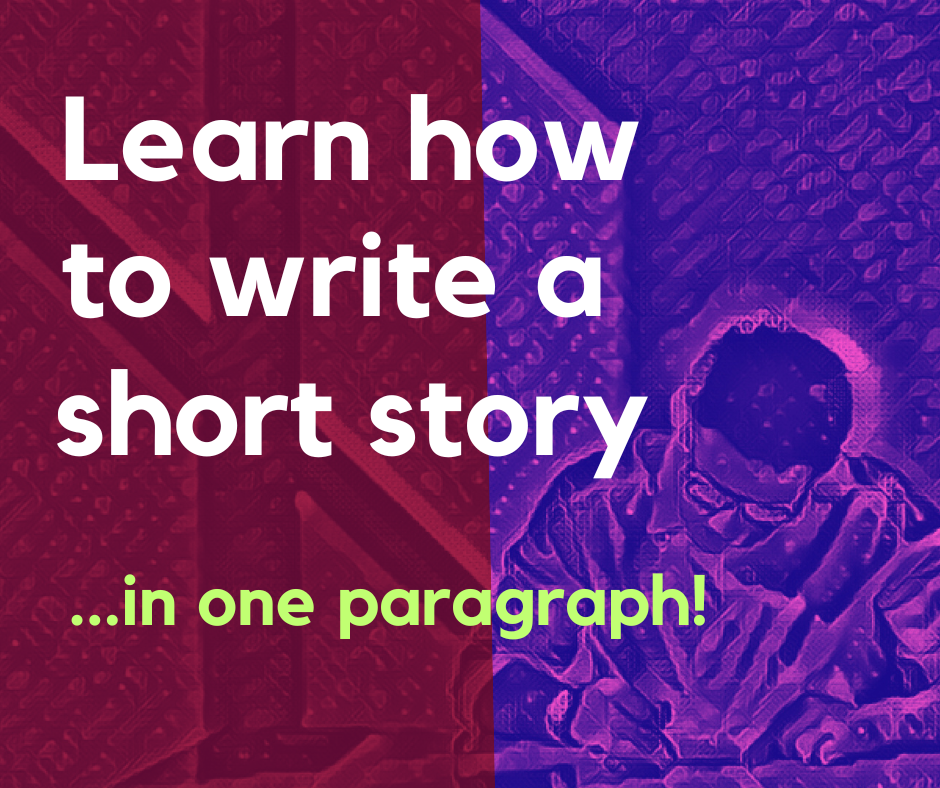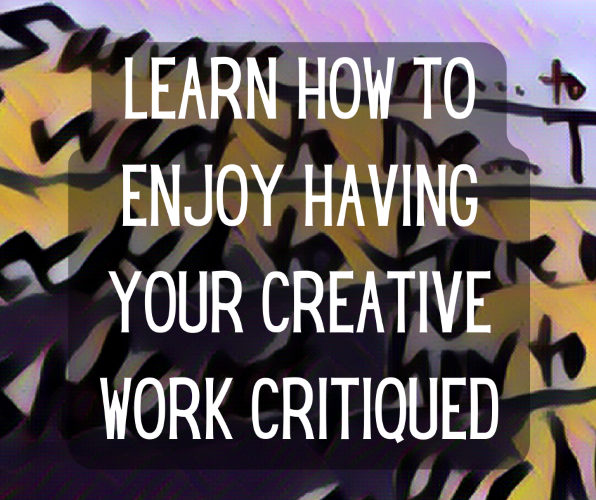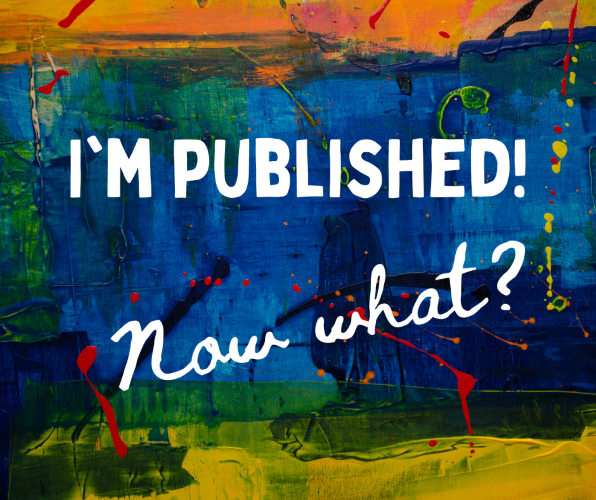Learn how to have fun writing a short story.
Write a story in one paragraph
Learn how to have fun writing a short story. You can create a complete story in one paragraph. Choose any genre. Start with one word and write a story around it. Below are some examples of stories I have written using this method. Get creative. Think of the message you want to convey and create a beginning, middle, and end to your story. You can do it!
In the stories below, I started with the one-word suggestion as given by one of two different accounts on Spoutible. If you don’t know about Spoutible yet, Google it. It’s a terrific, well-managed social platform similar in appearance to the Xbird site without the malarkey. The two accounts I follow to take part in writing one-spout stories are @Spoutories and @DailyPictureTheme. And you can find me at Spoutible here: @sherrydenboer.
Read my stories below, then write yours. There’s no right or wrong writing style. Create a character, a setting, a plot… and go for it. Is your protagonist a hero or a villain? Human or not? Fauna or flora? The choices are infinite. What is the message you want to relate to your reader? Imagine you’re there in your story. Look around. What do you see? What do you hear? Remember, we have five senses… six if truth be told. More? Maybe. You can create your own world. It’s your story. Let your imagination fly. Go ahead, start telling it. And for those of you who want more, check out my Writing Prompts book below. Also, all photos here, and throughout my website, are mine.

Writing Prompts book: 14 imaginative, diverse genre prompts for creative, fiction writing and busting writer’s block, teens and adults. 7.5 x 9.25″ 120 pages.
Short Stories:
Click on any word in the list below to jump to the story.
fuzz social revenge clown think mirror swept crunch lose mountain chip smug busy wet beam ordinary spin car blurry friend wide sparkle glee hesitate music chill tiny courage flustered present rain low change
You’ll find the word of day identified at the end of each short story.
The turntable spun Pink Floyd. We floated on the notes. A wee roach, pinched between fingers, miraculously went about the room. Boom! No one moved. Someone miles away yelled, “Fuzz!” #Spoutories #fuzz
Dreaming of revenge, Liz ruminated. She’d show him. He’d see how she’d survived his brutality. She was thriving! The days passed. On she plotted. Until one day, Liz realized her revenge was him showing himself in a different form. Letting it go, she claimed back her power. #Spoutories #revenge
They called him the class clown. Farley made them laugh until they cried. He enjoyed doing so. But beneath his humor was a sadness so heavy, it hung like an anchor around his neck. The ocean floor beckoned, but humor gave him purpose and was a lifesaver. #Spoutories #clown
Above, stars twinkled in a cerulean sky. On the horizon, purple hues lingered; the color of the day was slipping away—a fading dream. Miriam’s heartbeat counted time, but she ignored its measuring; she did not want to think about her losses. “Let them go,” she whispered. #Spoutories #think
Jane avoided the mirror. A window to her fear it held the faces of the people from whom she had escaped. They hovered like vengeful ghosts. She knew to survive their wrath; she would have to face them one by one. But not today. Not today. #Spoutories #mirror

The soft breeze rustled in the treetops. A single, red maple leaf came loose. For a moment, it hovered magically. In a force of resistance, it was swept high into the fall sky. A beacon of hope. #DailyPictureTheme #swept
Eyes wild with fear, Fran ran. Howling, the past was close on her heels. Ahead, the future waited in silence—a looming wall of uncertainty. This, she thought, is what they meant when they warned, “Look out for the time crunch!” #Spoutories #crunch
A mouse in a top hat tapped a walking stick against an arched door. The door opened. “Come in,” said a grasshopper gleefully. Just arrived, dropped here as if into a dream, from behind a cherry tree, Ben watched wild eyed, thinking, this is what it means to lose one’s mind. #Spoutories #Lose

The wind moaned its disapproval. It wanted to blow the mountain away. But the mountain was unmoved. “Howl as you must,” it shouted to the wind. “But I am steadfast and resilient. You cannot upset me. Besides, we are friends.” And the wind settled, rethinking its intentions. #TheDailyPicture #mountain
Joan crept into the dark kitchen and reached for the knife block; the butcher knife was already missing. Clamping a hand to her mouth, she stifled a cry. From behind, the crunching of a potato chip bag sliced the silence. She turned to an onrushing glint of metal. #Spoutories #chip
Storm clouds rolled in like warships. A deep purple, yellow-tinged sky dumped heavy sheets of rain. Lightning sliced the sky. A crackling rumble of thunder followed. To Harry, the brewing storm was a sign. “Last night,” he thought, “Sam was so smug. He doesn’t deserve me.” #Spoutories #smug

In the meadow just beyond the barnyard fence, the two friends chatted. “What do you think? Should we ask him?” asked Penny the pony. “I don’t know,” answered Bob the beetle, crawling to the tip of his friend’s ear. “He might want to come. He doesn’t look busy.” #DailyPictureTheme #busy
Theodore sat hunched on a soggy log. Exhausted, he raised his face to sunlight peeking out from behind passing storm clouds. The forest was lush with fat droplets glistening. He retrieved his map, and his eyes widened. Now that it was wet, it showed a hidden message. #Spoutories #Wet
In the farmer’s field at dusk, the row of scrappy trees is a dark silhouette. Mitch sees the jerky beam of the tracker before the rickety machine comes out from behind them. Crouching out of sight, he waits, hungry, tired, and scared. #Spoutories #beam

They were ordinary stones but piled one atop the other and they spoke of peace. #DailyPictureTheme #ordinary
“Spin!” shrieked the wretched witch to the yellow-tinged sky. “Spin into a fury!” The sky was compelled to comply. Purple, billowing clouds, bellies heavy with water and ice, spun and spun. A tail appeared, it’s tip touching down. The villagers scooped up their children and ran! #Spoutories #spin

He was a car guy so we were a car family. Still are. My dad. Miss him everyday. Endless love. #DailyPictureTheme #car

“What is beauty?” asked the stranger, tipping his hat. The people pointed at this and that, but they did not know. “Beauty is blurry. Is is joy, sorrow, young, old, near, far, life… death. Look at a blade of grass. Listen to a tree. Feel the beating of your own heart.” #DailyPictureTheme #blurry
At 6, a friend was forever. At 16, a friend meant sharing secrets & laughter. At 26, an abusive man stole me from my friend. At 36, a friend meant good wine & adventure. At 46, illness meant finding out who my friend was. 56 was lonely. Nearly 66, a friend is rare & precious. #Spoutories #friend

The wide, majestic view gave Joseph a glimpse of raw beauty and steadfast power. This, he thought, is just what I need. From that point forward, he used the inspiration of the Icelandic landscape to forge his path into an uncertain future. #DailyPictureTheme #wide
It started with a sparkle of light… a flickering glow in the darkness. The two weary travellers, content in their love, watched in silence and waited for the inevitable. One took hold of the other’s hand a breath before the blast reached them. #Spoutories #sparkle

“I don’t know,” said Harvey chewing on a piece of straw. “He doesn’t look happy to me. He looks… startled.” Charlie lifted his hat from his head. “Ah, shucks, Harvey. Give him a break, he don’t do glee in his old age. Besides, he’s tryin’ to look cool for barn.” #DailyPictureTheme #glee

That moment when you hesitate, but only for a breath of creative inspiration… and then get right back to using what ever is left in the bucket of nick-nacks and letters to make your sign shine! Puff up with pride, pal, cause you did it! #DailyPictureTheme #hesitate
“What is music?” asked Bing from beneath his mother’s wing. “Ahh,” said Minka, “it is the love in our hearts and the pain in our suffering. It is a memory, a bridge, a shelter, and a hug. It is every tear, and every smile.” “How will I know it, mama?” “Just listen.” #Spoutories #music
Falling into the freezer, the chill hit like a thousand stabbing spikes of steel, swift and paralyzing. The door moved behind him, and the moment it clicked closed, the evil Varcus King shattered into a million little pieces. #Spoutories #chill

Within the delicate matrix of a tiny dandelion, there is a whole universe. #DailyPictureTheme #tiny

“Wish upon the bottle of blue, and the love you dream will come true,” said the wise oak tree. “Add a white flower to increase its power,” said the sparrow nestled within her leaves. “And be kind,” said the rainbow. Love is love. #DailyPictureTheme #bottle

“Courage has many faces,” said the wise man. “Sometimes, it means entering the storm not knowing whether you’ll make it through. Other times, it means resilience after the storm has passed. Often, it means looking within.” #DailyPictureTheme #courage
When expressing your fears, worries, troubles, or triumphs seems impossible because you are alone, don’t get flustered. Show who you are, anyway. Create. Draw, paint, dance, or play. Compose music, sing, or play an instrument. Write a story. Live. That’s how you’ll share. #Spoutories #flustered
“People come and go,” said the old man. “In my life, no one has ever been truly present.” He nodded sadly, pushing a bowl of water closer to his dog. “There’s always noise or neglect, and life can be lonely… but,” he smiled, “it is not without hope.” #Spoutories #present

As if to show with indisputable resolve that hope is always alive and present, after the torrential rain, a double rainbow appeared. #DailyPictureTheme #rain

Low to the ground the foliage has turned burnt orange. When the sun casts its light upon the sprawling leaves of these bushes, from afar they appear as if they are smouldering flames. Trail walks will smooth the soul. #DailyPictureTheme #low
“Why are people so afraid of change,” asked the boy.
“They’re afraid of the unknown, son.”
“But, Dad, isn’t the unknown where hope lives?”
Dad bent down to his son, tears in his eyes, his worry subsiding. “Thank you, son.”
“For what, Dad?”
“For changing my perspective.” #Spoutories #change










